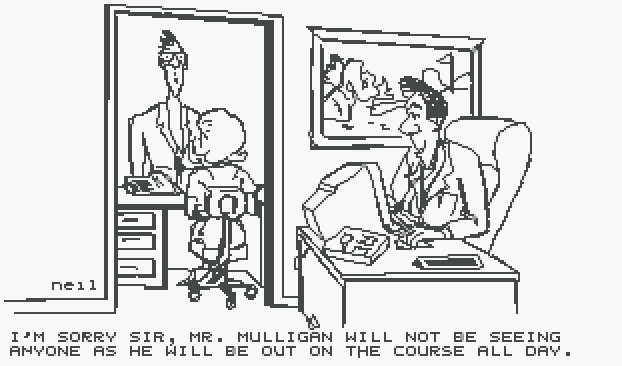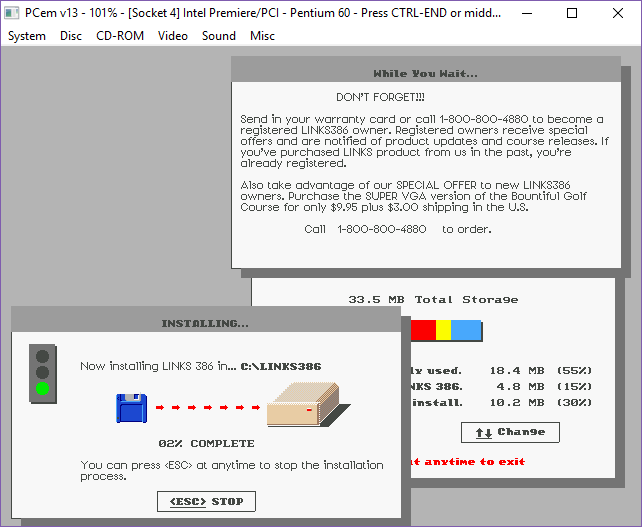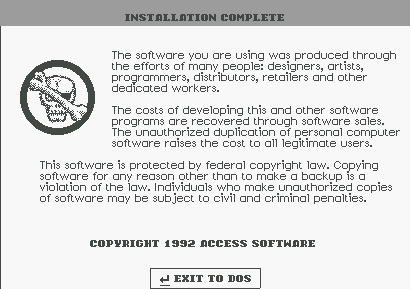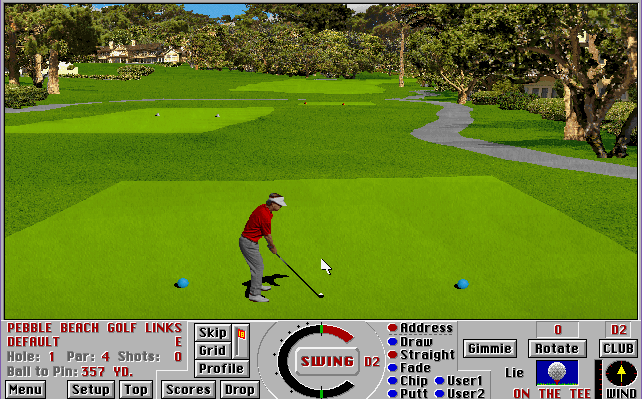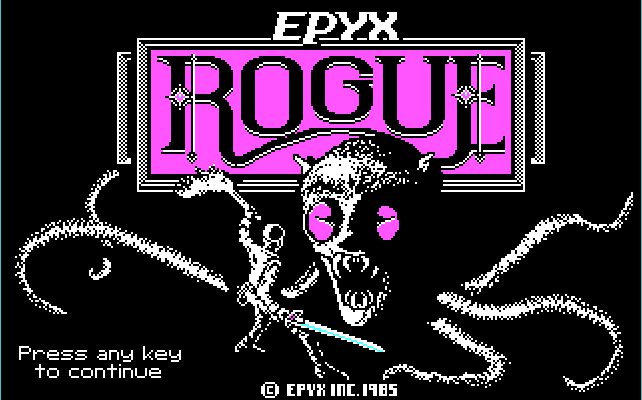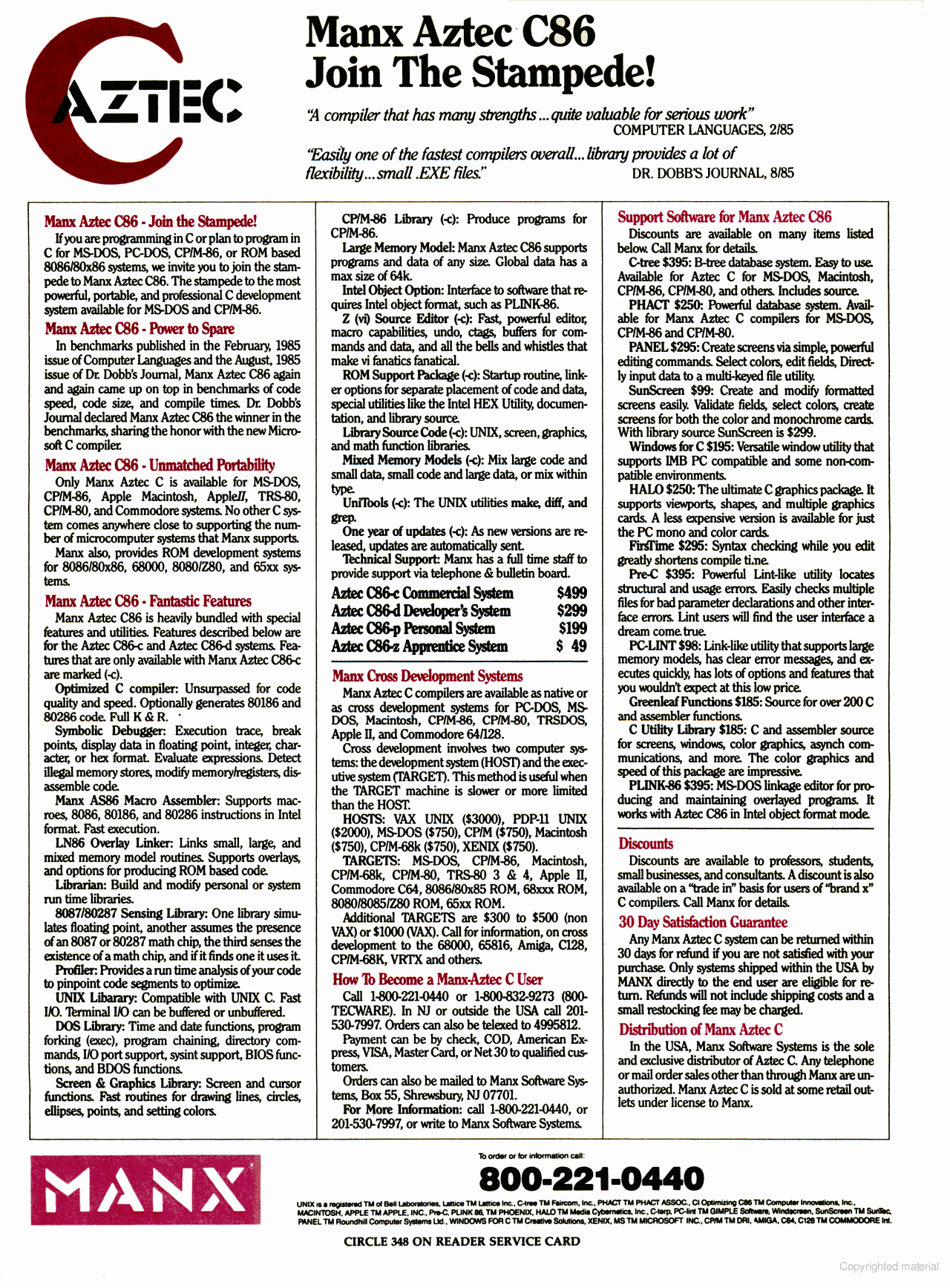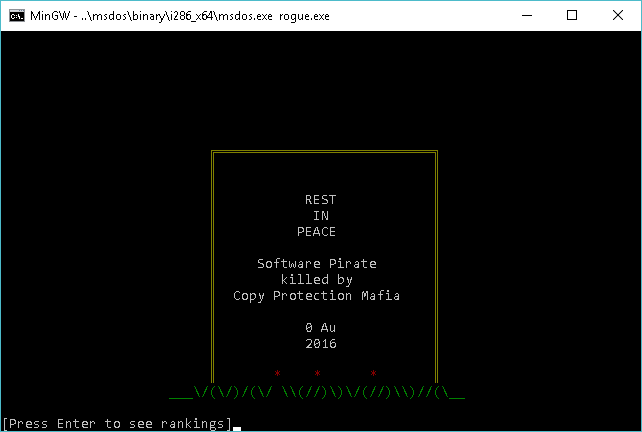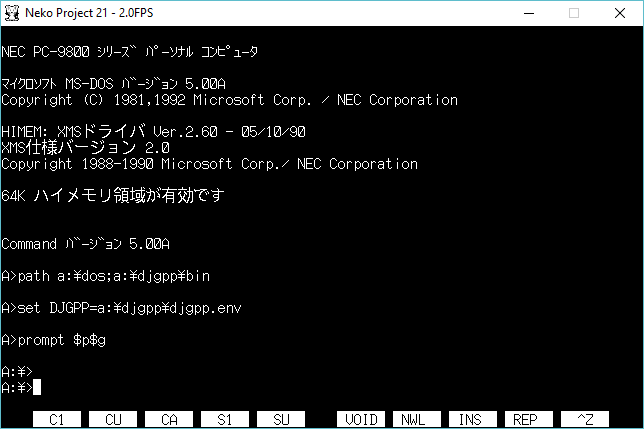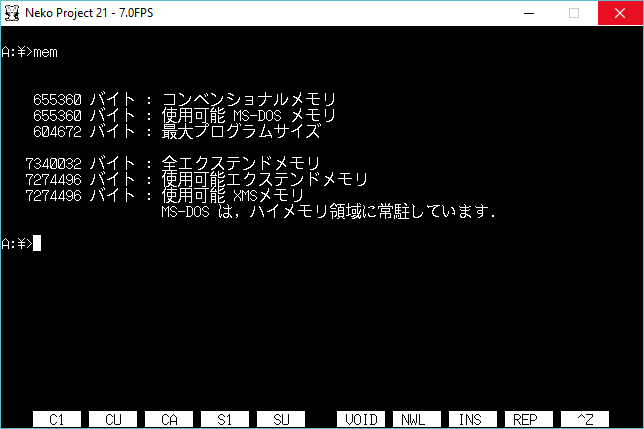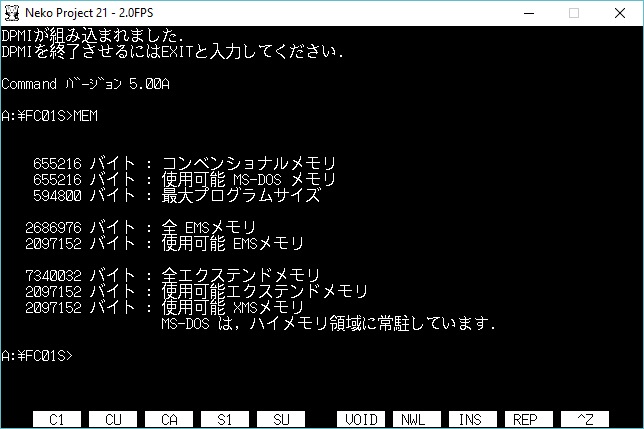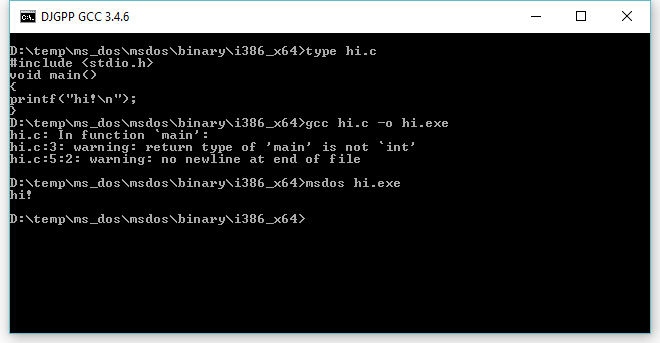Links 386 is one of those programs that is very easy to love to hate. It was 1992, and PC’s were mostly being used for business, and high powered 32-bit machines were still insanely expensive. And then Links 386 happened. Before there was DooM, Links 386 was the ‘must have’ executive ball clacking device. And the specs that you needed to run this game were really over the top. At it’s heart was the Phar Lap 386 Dos extender, along with the virtual memory module.. Which most people would have to rely on. Links 386 really needs over 8MB of RAM to run. Yes, that is correct, in 1992 you were recommended to get 8MB (which should have been about $400-800 USD) So you can golf at your desk. But as the name implies you also needed a 386 classed computer, although ideally you would have one of those new 486’s! Links 386 also pushed the edge by wanting a VESA capable SVGA card that could use mode 101, 103, or 105. Although the higher resolutions modes just ended up with logos everywhere, it really didn’t take enough advantage of the higher resolution modes.
Another interesting thing is not only does Links 386 have sound drivers (which means you need a sound card!) but it’ll do voice through the AdLib card. Also it has a driver model, the WLZ, which I don’t know if they ever published or if people wrote additional sound drivers.
The installer is kind of cute, in that it’s flat shading is so old it’s now modern. How’s that for crazy?
Installation is a snap, at only four diskettes. They sold additional courses, and I only have one additional course, although oddly enough finding others online is pretty trivial. However I had far less luck finding the program. One nice tip to Infocom is that the courses include a score card, like the ones you would get on actual courses. It really tied the package together.
Although for me, I really bought it for the manual.
And I have to admit it, Access Software did a great job. Even all these years later, it looks great. But no doubt scaling and placing all the textures is SLOW. Incredibly slow.
Back in the 90’s I had a lowly support job, and I’d get flown all over the country to help out with issues, and it’d never fail that the regional director would have ‘issues at home’ and amazingly they’d always ask about running Links 386 Pro. No doubt a lot of people upgraded machines, and got to brag to their buddies on how fast Links would now load. Running at actual 386 speeds will take nearly a minute to render the screen between shots.
The DOS Extender was forever very touchy. It took a bit of work to get around it’s issues, with the continuous conflicts with TSR’s, drivers, sound cards, video cards.. It was a nightmare of compatibility issues. Not to mention that although Phar Lap 4.1 was DPMI compatible, it really didn’t play that nice with OS/2 or Windows. Microsoft would later come to the rescue for this costed gamer market in the form of buying Links away from Access software, and putting out Microsoft Golf. And much like SimCity, being able to run this under Windows make it immensely popular in the workplace, as all you needed to find were Windows drivers for your hardware, which vendors did actually support, unlike games.
It’s amazing how companies like Phar Lap, or Rational never did try to make an actual gaming platform for their extenders, leaving it all up to individuals. My older self says that Microsoft’s rise to prominence in the 90’s was mostly due to their competitors incompetence, rather than their brilliance.
Although DOS Extenders like Phar Lap have been around since the introduction of the 80386, Links 386 Pro is the oldest one I know of. If you like programs that try their best to bend the limits of what you can or should do, certainly check out Links 386 Pro!

